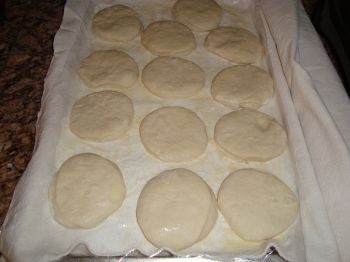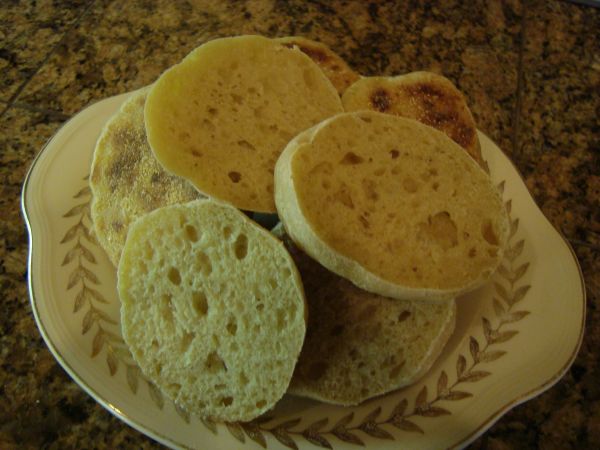Wide Yeast English Muffins photos
These are made using half the recipe given at http://northwestsourdough.com . I have made these before and they are very good with plenty of nooks and crannies with a mild sourdough flavor.


These are baked in the oven for a few minutes after grilling!

- Log in or register to post comments
- 2 comments
- View post
- SylviaH's Blog
